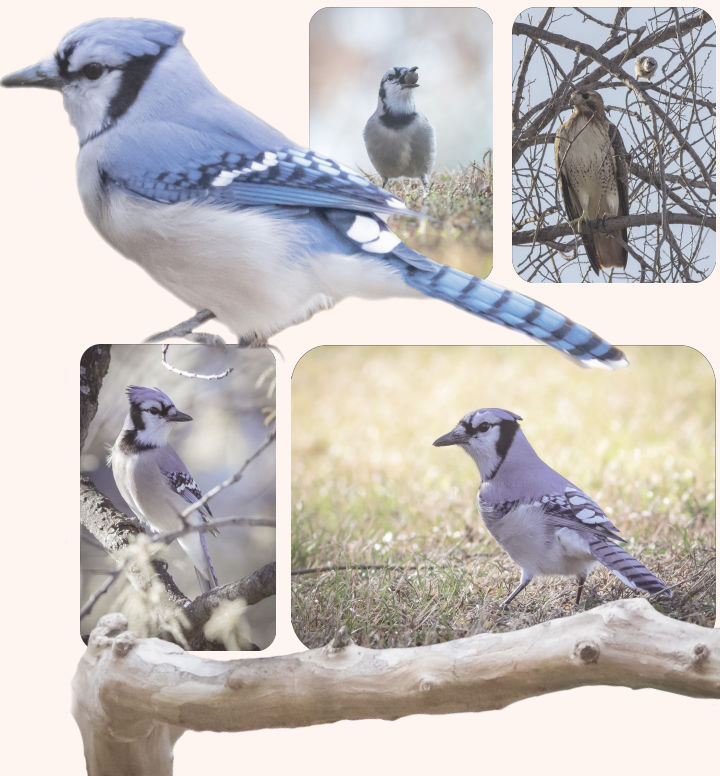A common sight in American suburbs, blue jays are among the most stunning backyard birds. They have bright blue patterned plumage on their backs and heads, along with black and white on their face and belly. Due to their long tails, a slight crest on the head and their large size, blue jays are an unmistakable sight.
Blue jays are most active in the early mornings and early evenings during the last hour of sunlight. Their calls travel far and can be heard throughout the year, particularly during the day, unlike other bird calls. The call is a peculiarly loud “jay” call which lasts about a second and descends in pitch.
Blue jays frequently visit feeders and can be seen under trees looking for food. With a diverse palate, blue jays can sustain themselves on a variety of food sources including seeds, fallen nuts and even worms. After collecting food from the ground, blue jays promptly take their catch back to their perch in a tree. On the right, you can see a blue jay with its catch. Blue jays have been documented to eat eggs and nestlings of other birds, but that is not the only thing that makes them a renegade.
The most surprising fact about blue jays is that they are most closely related to crows, ravens and magpies, as all of them belong to the corvidae family, which includes some of the most intelligent birds. They are highly social and protective of their territory and community — a characteristic feature of corvids is their aggressive behavior toward predators and larger birds. Seen on the right, our photographer caught a blue jay harassing a red-tailed hawk. After the hawk landed on the perch, the blue jay came around and disturbed the predator until it left. Blue jays can team up and drive off predators if they feel threatened or want to protect their community. It is also not uncommon to see videos online of corvids messing with larger animals, including cats.
Blue jays nest and raise young during the spring and summer months, along with many other North American birds. Be sure to help these birds raise a new generation by leaving out some water for them through the upcoming scorching summer. During these months, blue jays are highly active outdoors with their household duties, making spring a great time to observe them in the wild.







